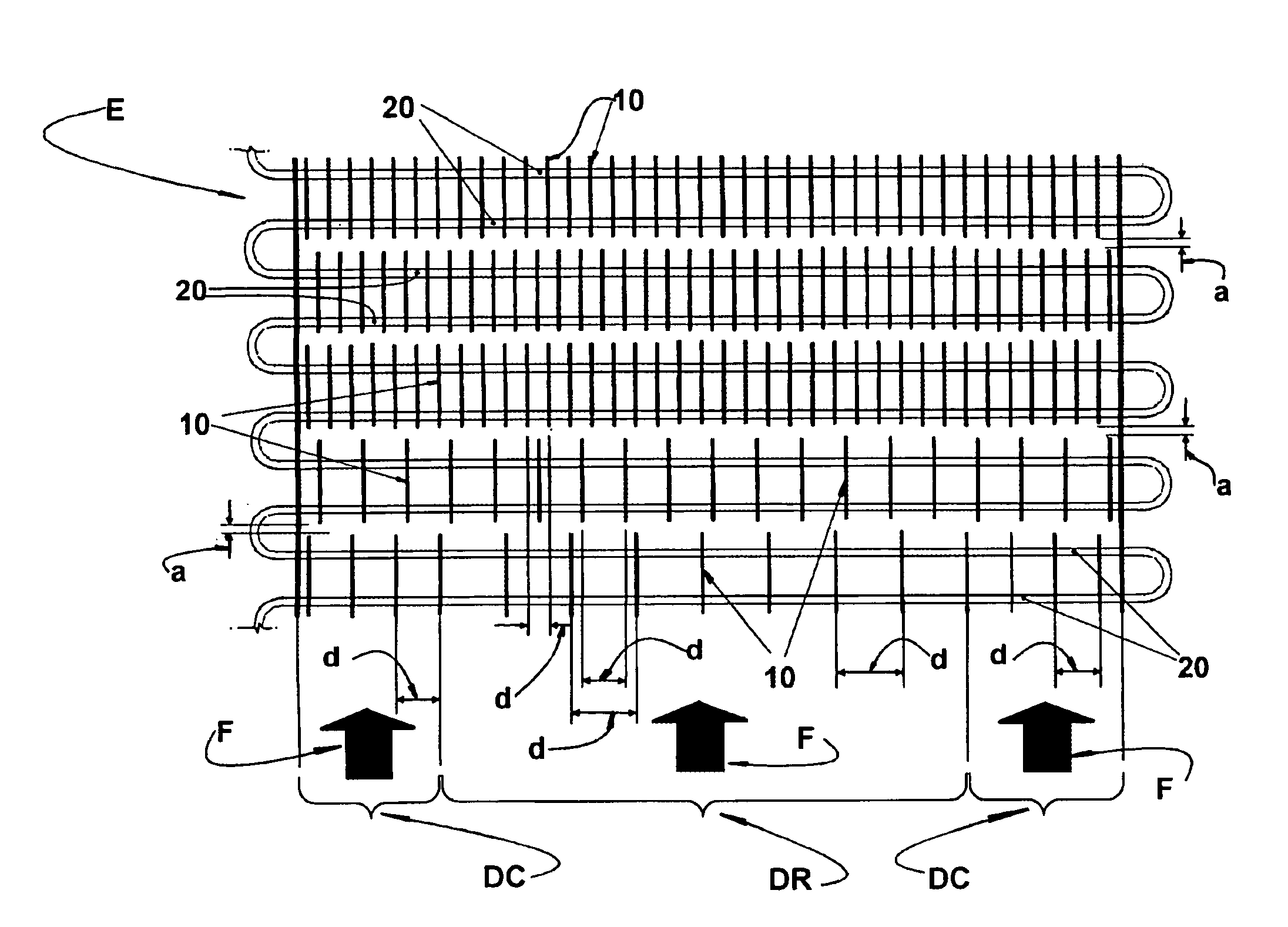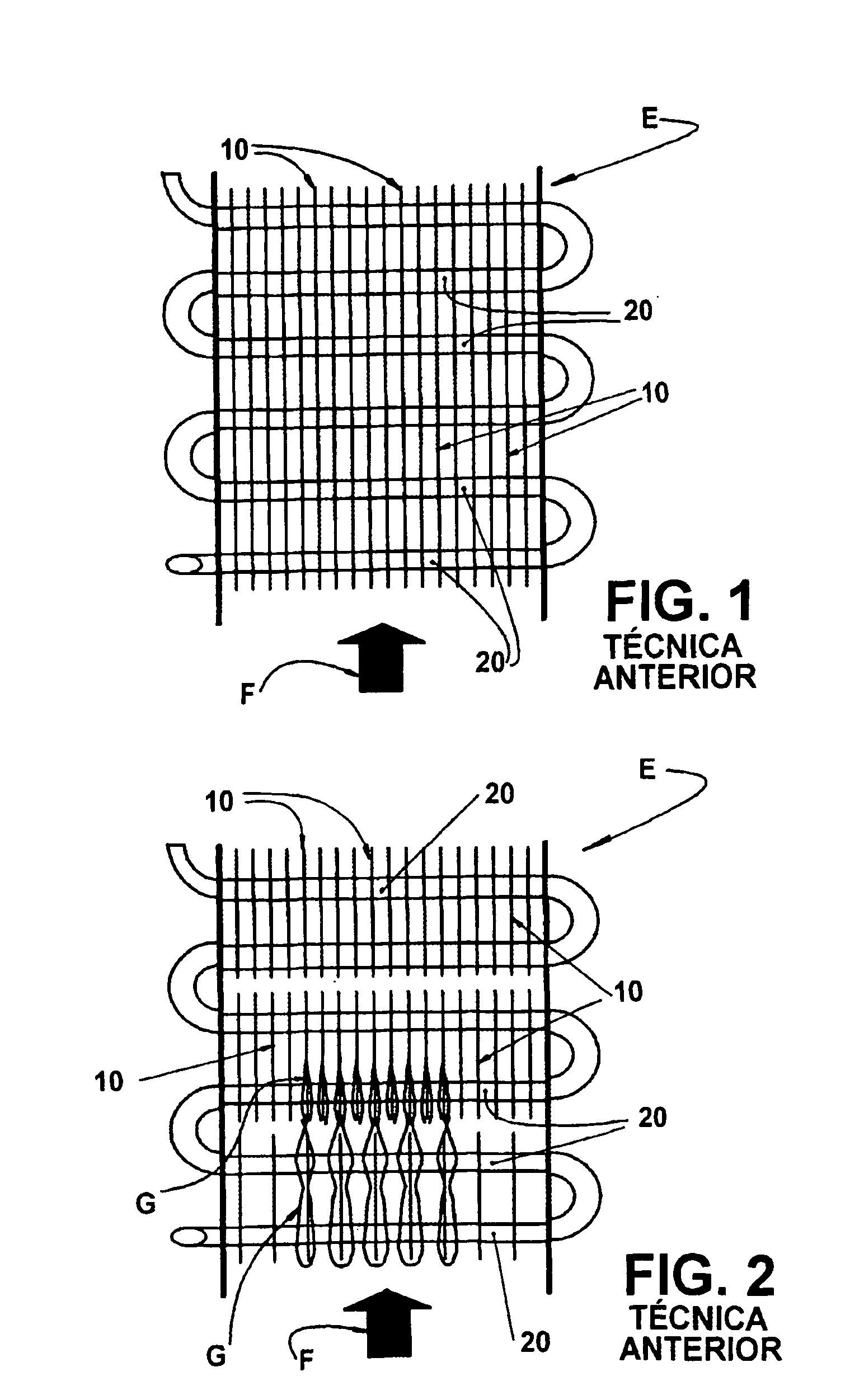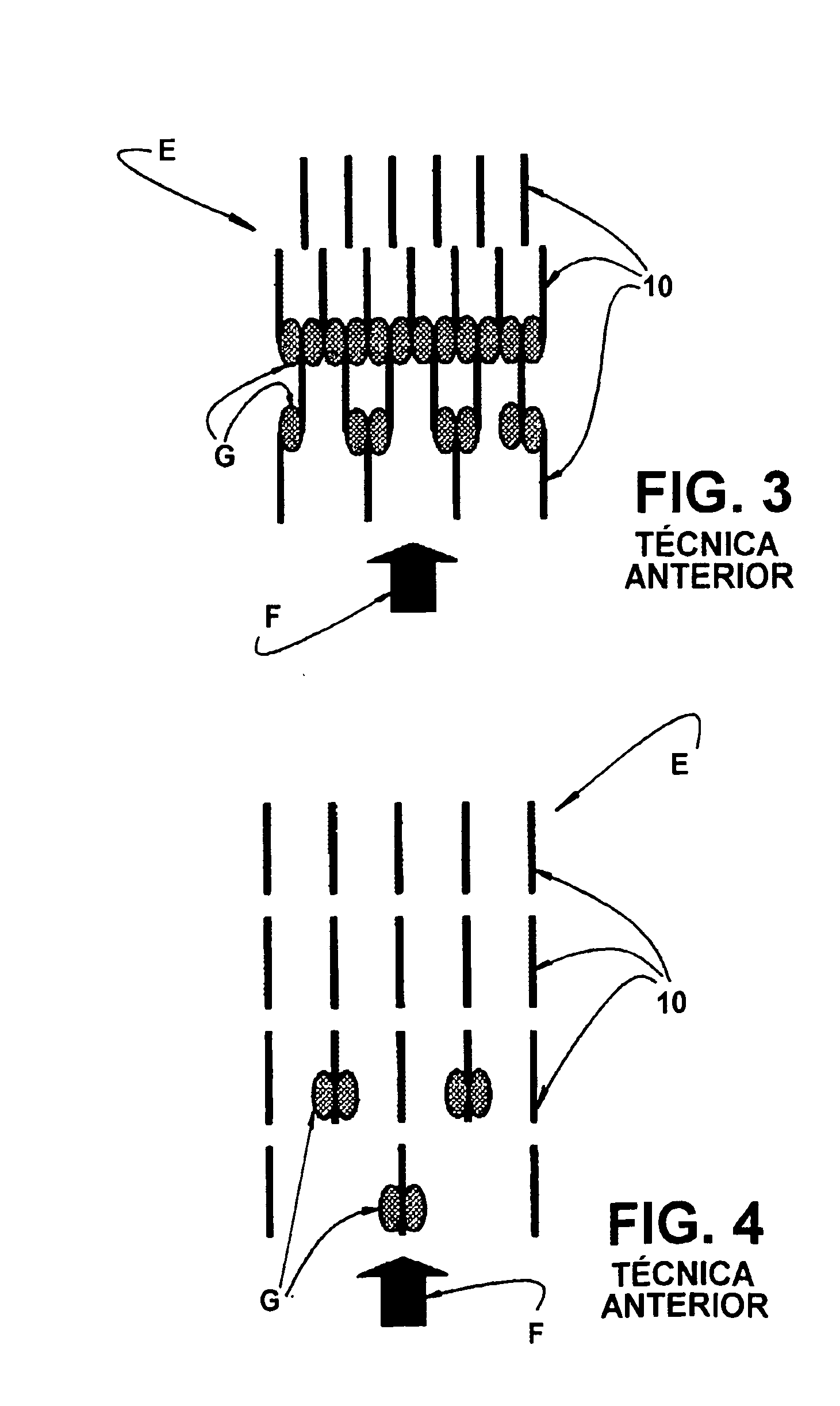Evaporator for refrigeration systems
a technology of evaporator and refrigeration system, which is applied in the direction of defrosting, lighting and heating apparatus, domestic cooling apparatus, etc., can solve the problems of low heat transfer efficiency and ice formation in the evaporator, and achieve the effect of significantly affecting the thermal exchange efficiency and higher level of ice formation
- Summary
- Abstract
- Description
- Claims
- Application Information
AI Technical Summary
Benefits of technology
Problems solved by technology
Method used
Image
Examples
Embodiment Construction
[0020] As illustrated in FIGS. 1 and 6, the evaporator E of the present invention comprises a plurality of fins 10 arranged in multiple rows, extending transversally to the direction of a forced airflow F that is forced to pass through the evaporator E, as well as through one or more environments to be refrigerated (not illustrated) and which can be defined, for example, by a refrigerating environment, such as the compartment of a refrigerator, which is refrigerated at a temperature of about 5° C. to about 0° C., and by a freezing environment, such as the compartment of a freezer, which is refrigerated at a temperature of about −10° C. to about −20° C.
[0021] The forced airflow F is produced by a fan (not illustrated), which is adequately mounted in series with the air circulation to be produced through the evaporator and through the respective environment(s) to be refrigerated.
[0022] The fins 10 are obtained from a plate made of a material of high thermal conductivity, with a thic...
PUM
 Login to View More
Login to View More Abstract
Description
Claims
Application Information
 Login to View More
Login to View More - R&D
- Intellectual Property
- Life Sciences
- Materials
- Tech Scout
- Unparalleled Data Quality
- Higher Quality Content
- 60% Fewer Hallucinations
Browse by: Latest US Patents, China's latest patents, Technical Efficacy Thesaurus, Application Domain, Technology Topic, Popular Technical Reports.
© 2025 PatSnap. All rights reserved.Legal|Privacy policy|Modern Slavery Act Transparency Statement|Sitemap|About US| Contact US: help@patsnap.com



